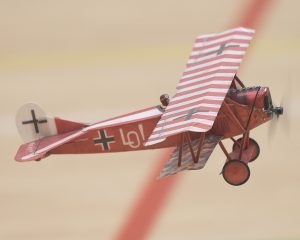What is Scale Indoor Radio Control?
Scale indoor radio control came about several years ago with the advent of small and lightweight radio control (R/C) equipment.
It wasn’t long before these small commercially available indoor foam models got damaged in collisions with objects and other models. The radio equipment was then harvested to fit inside traditionally built balsa and doped tissue free flight models.
The discipline expanded and more inventive modellers adapted the equipment and started venturing into other materials from which to build new models for the R/C gear. There grew an entire cottage industry catering for the indoor modeller. Probably the most popular medium for sport indoor models was the introduction of a foam called Depron. This is available in sheets, and is easily cut with a sharp knife and glued with a foam safe adhesive such as UHU POR.
Most of the electronics used today has been harvested from the Parkzone and E-Flite range of indoor models. The manufacturers soon realised that there was a market for these parts and started selling the electronics separately.
Nowadays the equipment has been cloned and manufactured by others, who have added different protocols so that different manufacturers transmitter handsets could communicate (bind) to the Receivers.
The Linear servos that are embedded in the small receiver (Rx) bricks have been superseded by small servos, weighing as little as 1.6 grams. The motors predominantly are still the same as those harvested from the Parkzone and E-Flite models, being brushed, gearbox units which don’t last terribly long but are very cheap to manufacture and are readily available.
The models vary in size and are restricted by the size of the area in which they are required to fly. As you will see when we look at the flying schedule, the aircraft must be manoeuvrable. There is a maximum weight limit of 300g and an upper limit on the wing loading of 15g/dm2 which must be adhered to.
R/C Rules and classes
With Indoor model scale the classes are usually split into two sections, a static
section, where the model is judged against line drawings, photographs and colour references from books and published articles. The accuracy of the outline, the position and colour of markings as well as the overall presentation of the model, is it in keeping with the full size.
The second phase is the models all important flying ability.
Kit Scale
With the new Kit scale class, the model is judged against a plan from an existing mass-produced kit. Not necessarily still in production but must have been at some time. Some allowances are made for adding the radio and propulsion systems. The control surfaces can be separated along the scale hinge lines, but otherwise the model must be as the kit designer intended.
Open Scale
With the F4 class, or “Open” class the model is judged to the highest standards, and this is the Blue Ribband event. With some truly wonderful feats of model building being displayed.
Flying Only
With the Flying Only Class (FO) the model is not static judged, and the score is based entirely on the models flying and how realistically the pilot can present the model while flying a set of strict manoeuvres.
***The flight manoeuvres are the same for all R/C classes***
Manoeuvres
The flying section is split into four mandatory manoeuvres. Take-off, figure of eight, descending circle and of course the approach and landing. As well as these manoeuvres three optional manoeuvres must be flown, selected from a list published in the rule book. Depending on the number of entries, three or four rounds are flown.
Typical optional manoeuvres being flown are the chandelle, wing-over, triangular circuit, rectangular circuit, touch and go and overshoot. Some opt for ordinance dropping such as torpedoes or bombs. Watch out for these as they can be spectacular. All manoeuvres must be nominated before the flight, and flown in sequence, each one being called before being executed.
Two judges will score the flight, not just the individual manoeuvres, but how they are connected, and the overall smoothness and realism of flight.
If you are interested in more details of the manoeuvres then please come and ask, we are all more than happy to oblige. There will be diagrams scattered around the balcony showing these too, so look out for them.
We are restricting access on Saturday to the main arena to competitors and organisers only, the main balcony, which is where the static judging will also take place, will be the focal point for spectators.
Sunday spectators are free to mingle in the pits area but please do not touch any of the models.
We are organised by the Scale Technical Committee under the overall banner of the BMFA. And should you want to enquire about getting more involved in flying, building, or competing, you can find the BMFA (British Model Flying Association on the internet, with both Facebook pages and other social media presences. “scale.bmfa.org”










